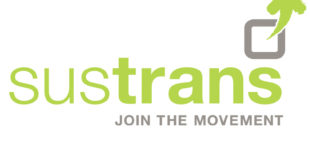The lack of consistent, high-quality cycling infrastructure across the UK means that many people don’t see cycling as an everyday means of transport – currently, only 7% of disabled people cycle in the UK despite 33% wanting to start.
This is why Sustrans has adapted the AutoTURN software, in order to simulate accurate real-life movements of people who cycle.
“We’ve got a lot of barriers on the NCN, and we’re trying everything we can to remove or redesign them,” says Giulio Ferrini, head of built environment at Sustrans.
“And it was a question that came up – how far apart should barriers be to allow people through on non-standard cycles?”
The software helps identify potential barriers on paths and ensure smooth flow and turn for different types of cycles, including tricycles, tandems and cargo bikes. As a result, engineers get real-time feedback at the design stage on whether a path or a cycle track is accessible and practical for different types of cycles.
To help assess the turning characteristics of cycles, Sustrans carried out a series of field tests to determine a cycle’s manoeuvrability when turning, including how quickly someone can steer from a straight-line path into a curve, how fast someone can travel around a tight bend, and how far they need to lean to do so.
“We’re using it already, as part of our design process, which is amazing,” Ferrini continues. “There are standards and guidelines already, but it’s not so immediately apparent without software that shows the space required by the different cycles and how they manoeuvre.”
Ferrini says until now, this software has only been able to simulate the movements of motorised vehicles, meaning the needs of people cycling were often forgotten in the design process.
As a result, cycle paths are often blocked by barriers, cycle tracks are too narrow or people have to make tight and uncomfortable turns. Now, designers will be able to see how much space a bicycle needs, and so cycling infrastructure can be designed to be more inclusive and accessible.
Designers may not have become aware of different cycles, Ferrini adds. “In the UK, the work that Wheels for Wellbeing has been doing has been instrumental in getting this in designers’ minds and in the policy.
“In the Netherlands, they’ve got very good standard, best practice guidance. And if you follow that, it accommodates all cycles by default. That’s very widespread and people know it and use it.
“In the UK, there is some guidance, but it’s patchy. It’s not an obvious step in the design process.”
 BikeBiz Bicycle and cycling retail news
BikeBiz Bicycle and cycling retail news




